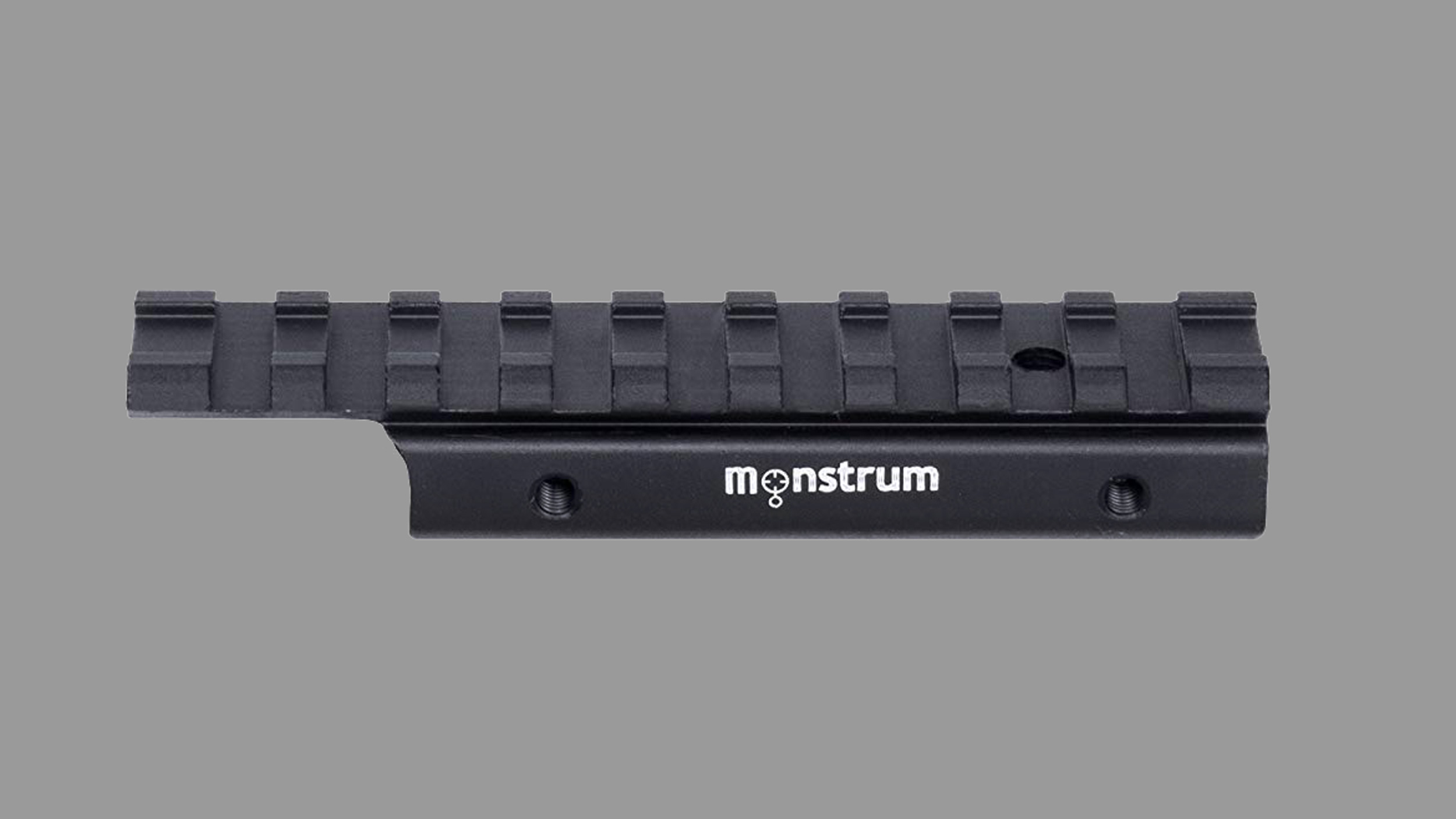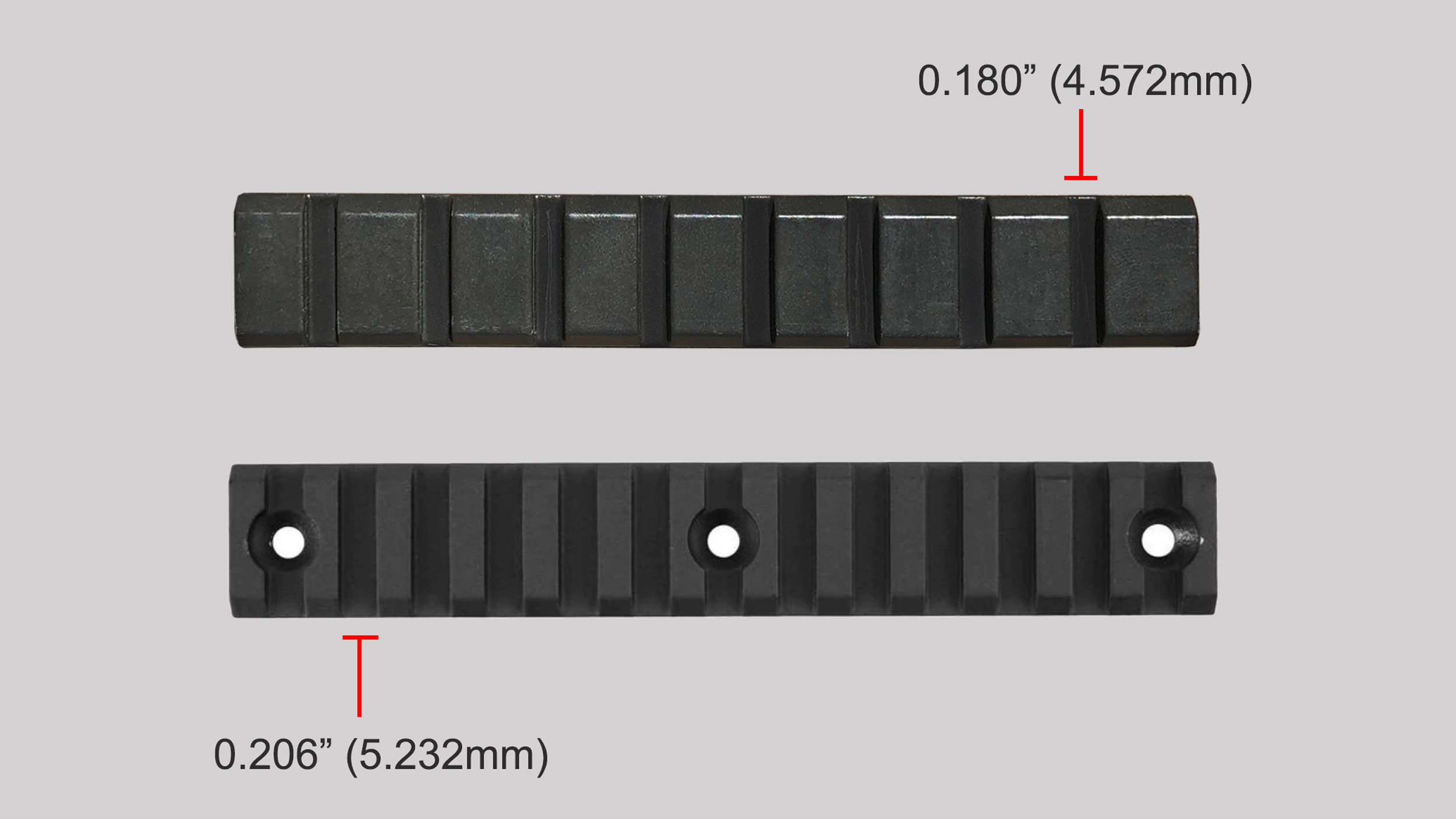
Picatinny, Weaver, and Dovetail Mounts
Posted by Alice Jones Webb on Jun 11th 2019
Picatinny, Weaver, and Dovetail Mounts
Your rail or mounting system is the crucial link between your firearm and your accessories. This link must be secure enough to handle normal bumps and jostles, but must also be capable of holding tight during violent and repetitive recoil.
There are several common types of rail systems available to easily attach accessories. Understanding the differences will help prevent common mistakes and ensure your optics, laser sights, fore grips, bipods, and other accessories hold firm during shooting.
Modern firearms typically integrate some type of rail system into their construction. If not, an aftermarket rail can usually be installed with minimal effort. Rail styles vary between manufacturers and even between specific models. Although some manufacturers use their own unique rail designs (Glock’s Modular Optic System for example), there are three main styles commonly used on modern firearms: dovetail, Weaver, and Picatinny.
The Three Most Common Rail Systems
New shooters are often wary when it comes to asking questions about these rail systems. It is easy for inexperienced shooters to think thinking this is basic firearm knowledge. However, even seasoned shooters may have difficulty explaining the differences.
Knowledge is power, especially when it comes to firearms, so for the sake of education, here is a basic explanation of the three most common types of mounting systems.
Dovetail Rails
The dovetail rail gets its name from its trapezoidal shape, which resembles the fanned out tail of a dove. One of the oldest joining systems in history, dovetail joints are common in woodworking, often used to join corners in cabinetry and furniture. This same stable and secure joinery is employed in the dovetail rail system.
Commonly used on rimfire rifles and air guns, the dovetail mounting system features two grooves that run parallel to the bore. Also called a “tip off” mount, the dovetail rail allows the shooter to easily remove and replace mounted optics.
Although dovetail rails come in a variety of sizes, the most common are 11mm and 3⁄8 inch (9.5 mm).

Weaver Rails
Developed by William Ralph Weaver, the Weaver rail was created in an attempt to standardize scope mounts. Before the development of the standard weaver rail, rifles were often drilled and tapped for small screws to secure a mounted scope. However, this mounting method often failed under rifle recoil.
The Weaver rail design features a pair of parallel rails with several perpendicular slots. Initially, Weaver rails were made in two separate pieces. This two-piece design made mounting optics time-consuming and proper alignment complicated. When the Weaver rail was first introduced, this two-piece design was essential for cartridge insertion, especially for rifles with internal magazines that could be fed with striper clips. Once rifles with detachable magazines became more common, one-piece Weaver systems began to replace the original two-piece design.
Weaver rails have a .180 inch long recoil slot. However, because there is no standard requirement for spacing, there is incredible variety among Weaver rails.

Picatinny Rails
Military standard, MIL-STD-1913 Picatinny rails (named for the Picatinny Arsenal where they were developed) was adopted by the United States military in 1995. Because of their versatility, Picatinny rails have replaced fixed iron sights on many long gun models. Picatinny rails are also prominently used to mount a variety of accessories including flashlights, red dot sights, bipods, and fore grips. They commonly appear on rifles, shotguns, and modern handguns.
The Picatinny design consists of a strip undercut to form a hexagonal cross-section with crosswise slots placed at consistent intervals. This concept allows the shooter to slide accessories into place from the end of the rail and then securely lock them into place.
Picatinny rails were developed after the Weaver design, and the profile of the two systems are virtually identical. The key difference is the placement and width of the slots. Slots on a Picatinny rail are .206 inch wide and have a consistent center-to-center width of .394 inch. On the Weaver, these slots measure .180 inch and are often randomly placed. Another notable difference in the two systems is the bottom of the recoil slot, which is square on a Picatinny rail and rounded on a Weaver.
Are Picatinny and Weaver Rails and Accessories Compatible?
The Picatinny rail has replaced the Weaver rail in almost every corner of the modern shooting industry. Military use and the consistent design of the Picatinny rail system have played major roles in the fall of the once popular Weaver system. However, Weaver rails are still found on some types of hunting rifles as well as through some online vendors.
Although at first glance it can be difficult to distinguish between these two rail systems, a Picatinny rail is not the same as a Weaver. The size and shape of the slots is the main difference, with these slots being slightly smaller on the Weaver rail. The Picatinny rail also has square-bottomed slots while Weaver’s are rounded. This means Picatinny accessories will not fit on a Weaver rail without modification. However, Weaver accessories typically fit on a Picatinny mounting system. The smaller Weaver rings may allow minimal wiggle, which could have a negative effect on optic precision.
Here at Monstrum, we have many types of picatinny rails to fit your intended use. A very common situation is when you purchase a keymod for your build and now have picatinny accessories that are no longer compatible. We have picatinny rails, in various lengths, that will mount on to your keymod so that you can continue to enjoy your accessories.
We also have picatinny rails for Ruger 10/22 and Mossberg Shotguns.



